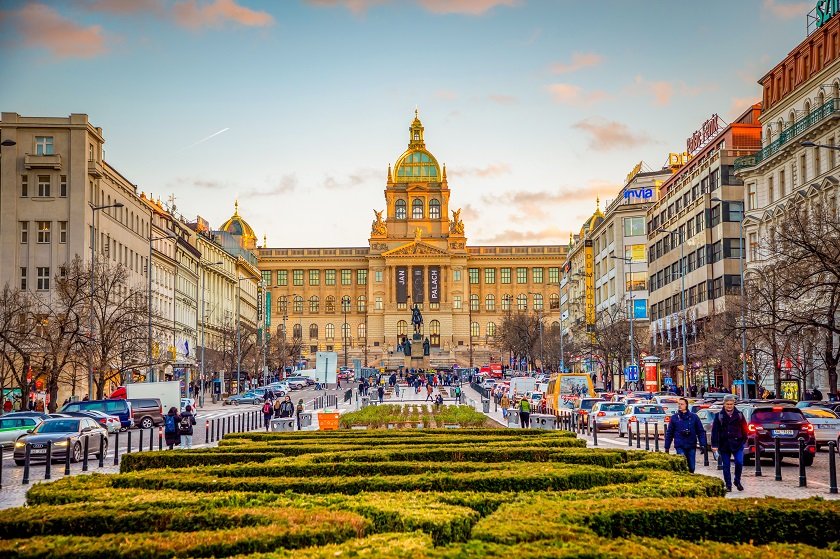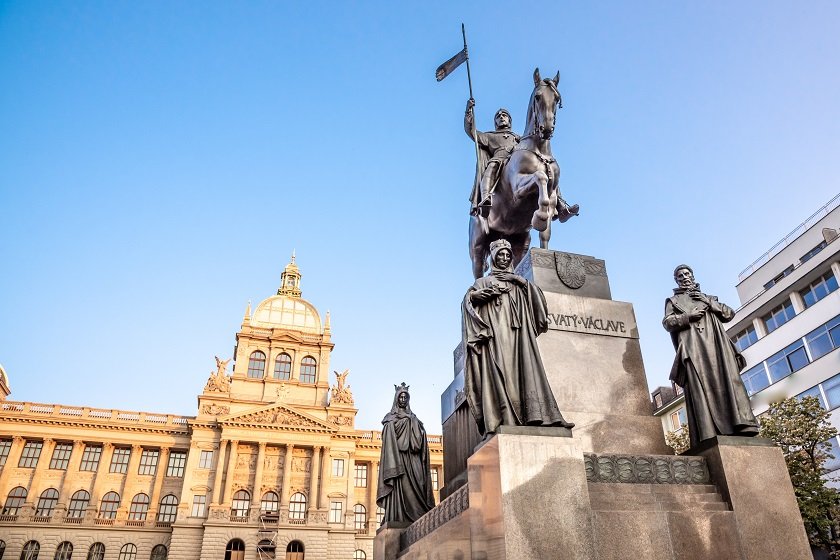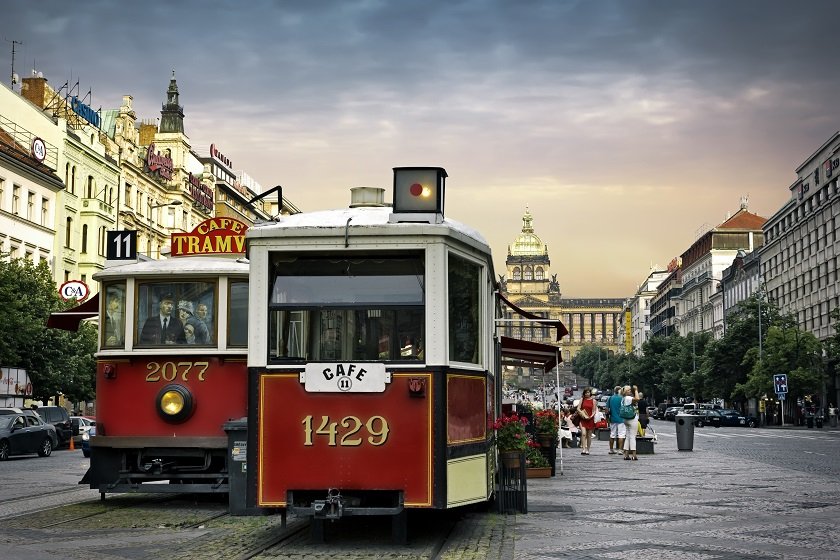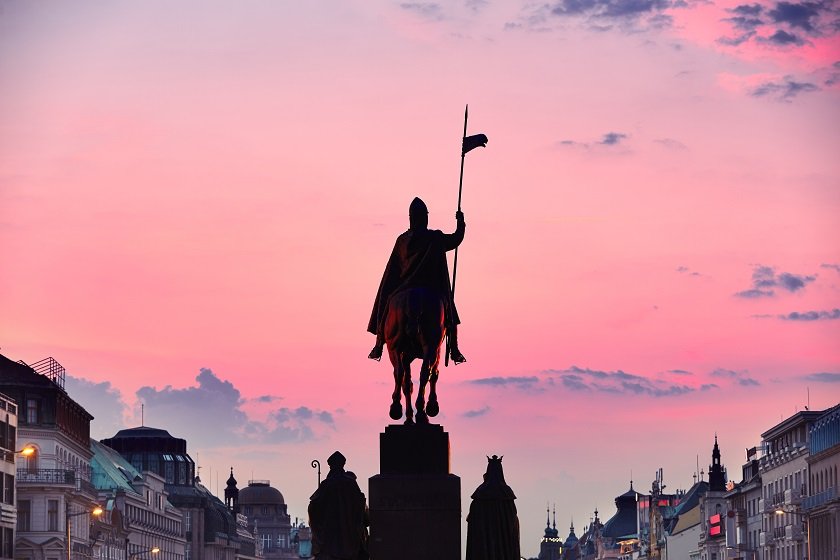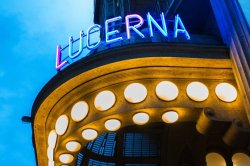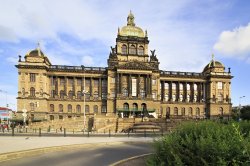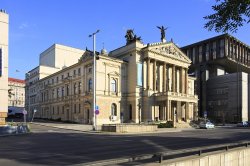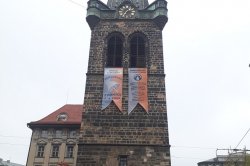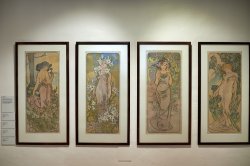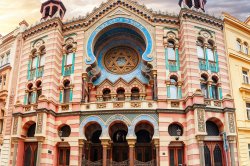Wenceslas Square
Wenceslas Square is considered a very important historical site, with numerous restaurants, theatres, shops and many other notable buildings.
It is a boulevard in the New Town district, about 750 m long. The south side of Wenceslas Square is dominated by the building of the National Museum; the north end runs into the pedestrian area in Na Příkopě Street.
“Václavák”, as it is often called by Prague residents, is dominated by the equestrian Statue of Saint Wenceslas, a Czech patron saint, that was sculpted by Josef Václav Myslbek in 1912. The statue is the landmark of the square and also the meeting place for various gatherings.
A tram line runs through the middle part of Wenceslas Square and the square is also the crossroad of all three Prague metro lines. Cars have access to most parts of the square and can park there for a fee. Christmas and Easter markets are regularly held on Wenceslas Square.
Between Vodičkova Street and Štěpánská Street is the Lucerna Palace, an important social centre and a venue for balls and concerts with a cinema, bar and café.
The square is a popular place to go to clubs and bars at night, but there is also a higher risk of minor criminality.
Useful information for visitors
Public transport connections
Václavské náměstí tram stop
Můstek metro station (green, yellow line)
Opening hours and admission
Wenceslas Square is freely accessible to the public.
Interesting facts about Wenceslas Square
Originally, Wenceslas Square was called the Horse Market and was one of the two main markets in Prague. It was built by decree of Emperor Charles IV in 1348. From its very beginning, it was considered as a pivotal place for various public gatherings, demonstrations, celebrations and other important historical events. In 1918, the reading of the declaration of an independent Czechoslovakia took place there. A year after the Russian invasion, student Jan Palach burnt himself to death on Wenceslas Square and in 1989 mass demonstrations against the communist regime took place there. Former President Václav Havel, along with many other famous personages, had his speech from the balcony of the Melantrich publishing house.
